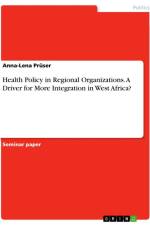von Anna-Lena Prüser
15,95 €
Seminar paper from the year 2017 in the subject Law - European and International Law, Intellectual Properties, grade: 1,0, Leuphana Universität Lüneburg, language: English, abstract: On the 26th July 2012, a time characterised by uncertainties about the future of the Eurozone, Mario Draghi, President of the European Central Bank (ECB) declared ¿Within our mandate, the ECB is ready to do whatever it takes to preserve the euro. And believe me, it will be enough.¿ The announcement detached historic political, economic and especially legal incidents. Only two months later, the ECB published a press release, which proclaimed the introduction of Outright Monetary Transactions. These operations allowed for the purchase of government bonds form Member States (MSs), which take part in the ESFS or ESM and conquer macroeconomic structural adjustment programmes. Despite the fact that the press release was hardly ever followed by a binding legal act or instrument to implement OMT, the mere pronouncement had the power to reassure the financial markets. From that date on, there were no more such extreme spreads in interest rates for government bonds. But the announcement caused a judicial tremor, known as the Gauweiler case. In response to Gauweiler and others¿ complaint against the OMT, the German Federal Constitutional Court (BVerfG) asked the Europan Court of Justice (ECJ) the first time in history for a preliminary ruling (Art. 267 TFEU) on the legality of the OMT programme. According to the BVerfG the ECB has exceeded its role provided by the Treaties of the European Union ultra vires by initiating a measure that a) has an economic and not a monetary nature (Art. 127 TFEU) and b) violates the prohibition of monetary financing (Art. 123 TFEU). The ECJ¿s judgement was very different from that of the BVerfG, in the way that the OMT programme is compatible with EU law in the light of the European Court. Gauweiler had extensive implications on the powers of the ECB, the relation-ship between the ECJ and national courts (especially the BVerfG) and the constitutional framework of the European Economic and Monetary Union (EMU). In addition, the case made important contributions to the distinctions between economic and monetary policy.






